Threats related to chemical, biological, or radioactive materials (CBRN) can face a ship both at sea and in port. The ship may encounter a CBRN threat in peacetime due to accidents or terrorist attacks, or in crisis situations as a result of military attacks. In any of the above situations, the ship’s crew needs to be aware of hazardous substances in the environment in real time to protect themselves and the ship’s equipment in the best possible way and to initiate the necessary countermeasures.
The use of CBRN agents is an effective way to incapacitate a ship or even an entire squadron, or at least reduce its ability to perform a given mission. On a global scale, naval missions have moved closer to the coastlines, resulting in the increase of the threat of CBRN accidents or attacks. For example, the use of modern unmanned platforms, both flying (UAVs) and moving on water (USVs), makes it possible and easier to carry out strikes even for actors with lower capabilities.
Protection Against CBRN Threats
The first prerequisite for proper protection is quick threat detection. The quick detection of a hazard defines the principles for the measuring devices and the structure of the CBRN system. In addition to the threat, the classification society and NATO have their own requirements and guidelines for CBRN preparedness. A properly designed CBRN monitoring system provides an immediate and comprehensive real-time situational picture to the crew, facilitating the implementation of timely countermeasures.
When the threat is detected, different levels of protection measures can be initiated and carried out on board. The main protection in ships entails closing ventilation intakes and setting the ship in CBRN protection mode. Air entering the protective space is filtered with CBRN filters, and by pressurizing the interior, dangerous substances are prevented from entering the internal compartments of the ship.
Modern navies and coast guards have protective pre-wetting or washdown systems in their ships which prevents, or at least minimizes, contamination of the ship’s exterior surfaces. If the crew needs to work on the deck and in the ship’s contaminated areas, personal protective equipment will protect them against CBRN agents.
Even after protecting the crew and the ship, there is still a need for real-time situational information and sharing of that information to the upper management levels in order to get a better overall situational awareness.
System Architecture
In order to detect the danger as quickly as possible and to ensure response capability, it is important that the system’s CBRN detectors detect dangerous substances quickly and in such small concentrations that the crew will not be endangered during protection measures. In the design of the detector system, the correct positioning of the devices and the coverage of the system must be taken into account.
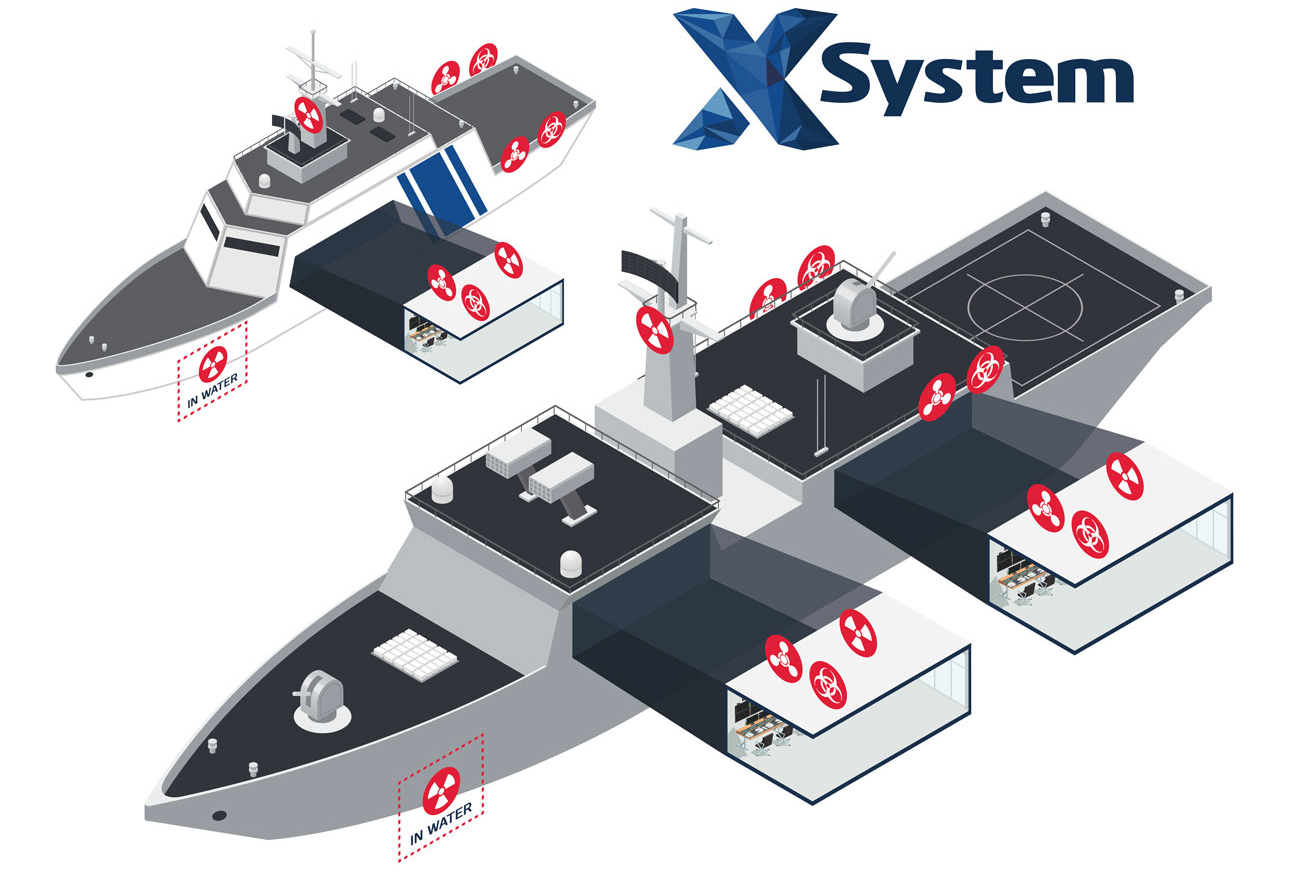
The CBRN surveillance capability must cover the entire ship, both exterior and interior. The quantity and quality of the system’s equipment must be designed for different sizes and types of ships on a case-by-case basis according to their structure.
The quick detection of hazardous substances requires the placement of detectors or their sample intakes in outdoor spaces or air duct intakes. An ideal location for chemical and biological detectors’ sampling is near the ship’s ventilation system’s air intakes or in the air duct before CBRN filtering. This way, it is possible to monitor whether the air inside the vessel is safe for the crew. In addition, by monitoring the intake air, one can ascertain when the outside air is clean again, containment can be lifted, and normal ventilation can be returned.
Even if the crew is protected inside the ship, the air inside the ship should also be monitored to verify possible leaks or the end of the filtering capacity of the CBRN filters. Therefore, it is recommended to equip every area which has CBRN filtering, with CBRN detectors.
X-System – A New System for CBRN Monitoring
Over the course of more than 35 years, Bertin Environics – formerly Environics Oy – has supplied CBRN monitoring capabilities to more than 100 ships around the world and, based on that experience, has developed the first CBRN system, in which the starting point for the design of each component has been the “suitability to operate in a marine environment”.
The name of this new solution is X-System. With system components having been tested accordingly against relevant standards and requirements, this solution is suitable for use on ships of all sizes and types, and for various tasks. The structure of Bertin Environics’ system is normally based on the customer’s requirements and recommendations coming from the classification society.
The following diagram shows the structure of Bertin Environics’ new X-System CBRN Monitoring solution on a ship with one CBRN protected area. In this example, the system includes the detection of chemical, biological and radiation threats from the outside and inside the ship. Furthermore, the radioactivity of seawater can be monitored with a separate radiation detector. In addition to the system’s own EnviScreen management software, the information from the detectors can also be forwarded to other systems onboard to increase situational awareness and, if necessary, also to control devices directly, for example to start CBRN filtering when a chemical detector alarms.
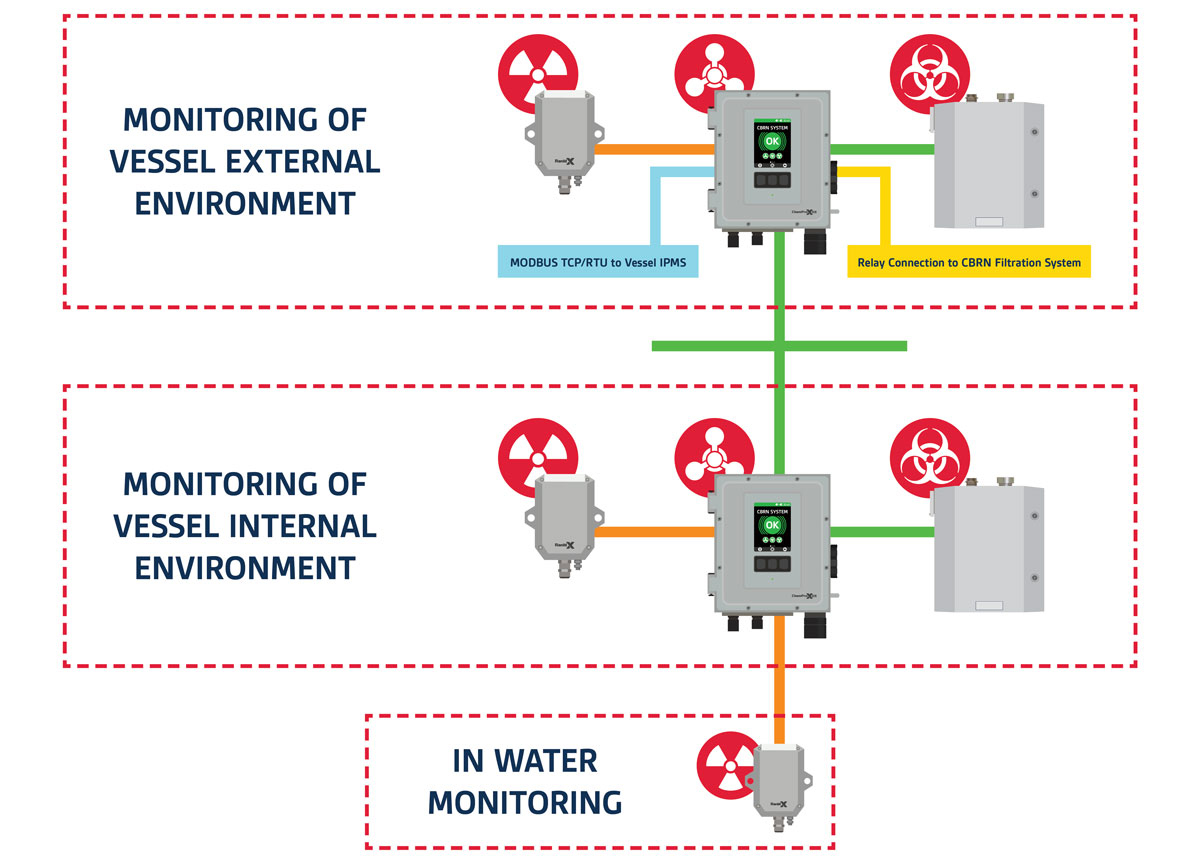
The system must include both outdoor and indoor monitoring. The information of the detectors is collected through ChemProX-DS gas detectors to be utilized by the situational information system.
Chemical Detectors
The most important function of the detectors is to detect a threat quickly, even before it causes danger to the ship’s crew. The gas detector must detect dangerous gas in the ship’s surroundings in less than 30 seconds, and preferably less than 10 seconds. The detector must also detect a wide range of gases including warfare gases (CWA) and toxic industrial gases (TIC) at concentrations that do not yet endanger unprotected crew.
There should be at least two gas detectors monitoring the outside air, and it is recommended to locate them on both sides of the ship, starboard and port side. In accordance with the design guidelines, detectors should also be placed in each CBRN-protected space inside the vessel in order to detect substances entering through leaks or as a breakthrough of the CBRN filters in time.
A chemical incident is the most probable of the CBRN threats, both during peacetime and during a crisis. Gas detection is therefore usually a basic requirement for a ship’s CBRN system and thus a standard component in monitoring systems. Based on this fact, Bertin Environics has decided to combine the gas detector and the system’s data management capability. ChemProX-DS is not only a gas detector, but also a data collection unit in the system, capable of displaying the status and sensor information of each other component in the system.
A combined gas detector and data acquisition unit simplifies and reduces system cabling requirements, as other sensors can be connected to the nearest gas detector. Third-party sensors, such as detectors for measuring explosive gases and carbon monoxide sensors, can also be connected to the ChemProX-DS detector. Due to the structure of the system, the reliability of data transfer also increases because any or all of the chemical detectors can be used for communication between the CBRN system and the ship’s management systems.
Besides its own data, ChemProX-DS processes the information gathered by other sensors into a suitable format to be transmitted to the situational information software for use by operators. The situation awareness software EnviScreen is usually installed on at least one panel PC onboard, for example on the bridge.
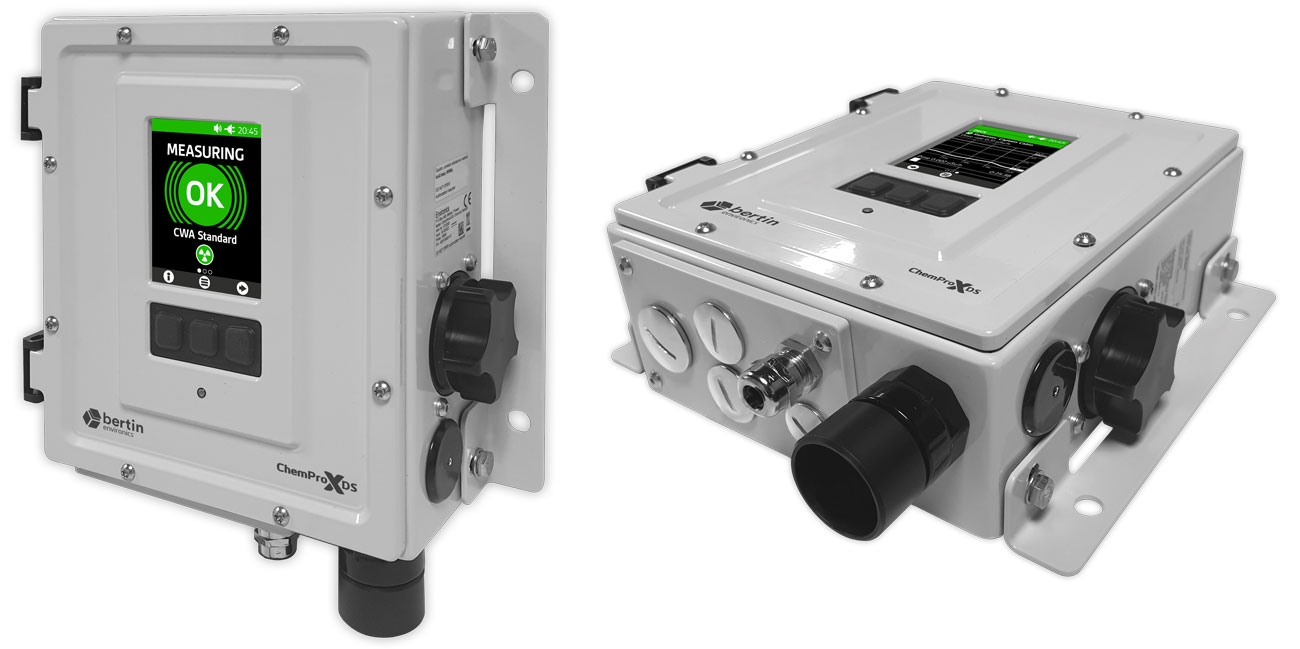
ChemProX-DS detects both chemical warfare agents and a large number of toxic industrial gases. In addition to gas detection, the device functions as a connection point and user interface for external sensors in the system.
Biological Detectors
Of the three CBRN threat types, a biological incident is the least likely to happen at sea, but, on the other hand, it is the most difficult to deal with and has the most damaging and unpredictable consequences. In peacetime operations, the possibility of biological threats is quite small, but it should be considered when planning the surveillance system and its capabilities. In addition to a quick warning, it is important to collect air samples for laboratory-level follow-up analyses, and it is desirable that the system collects the sample automatically in the event of an incident. Automatic sampling enables the crew to focus on performing the most urgent tasks during the event, while the biological detector system structure and its locations should be analogous with the chemical detectors in the system.
ENVI BioScout, developed and manufactured by Bertin Environics, monitors the amount of potentially harmful bioaerosol particles in the air. After recognizing the danger, the detector alerts the system and automatically collects the sample for further analysis.
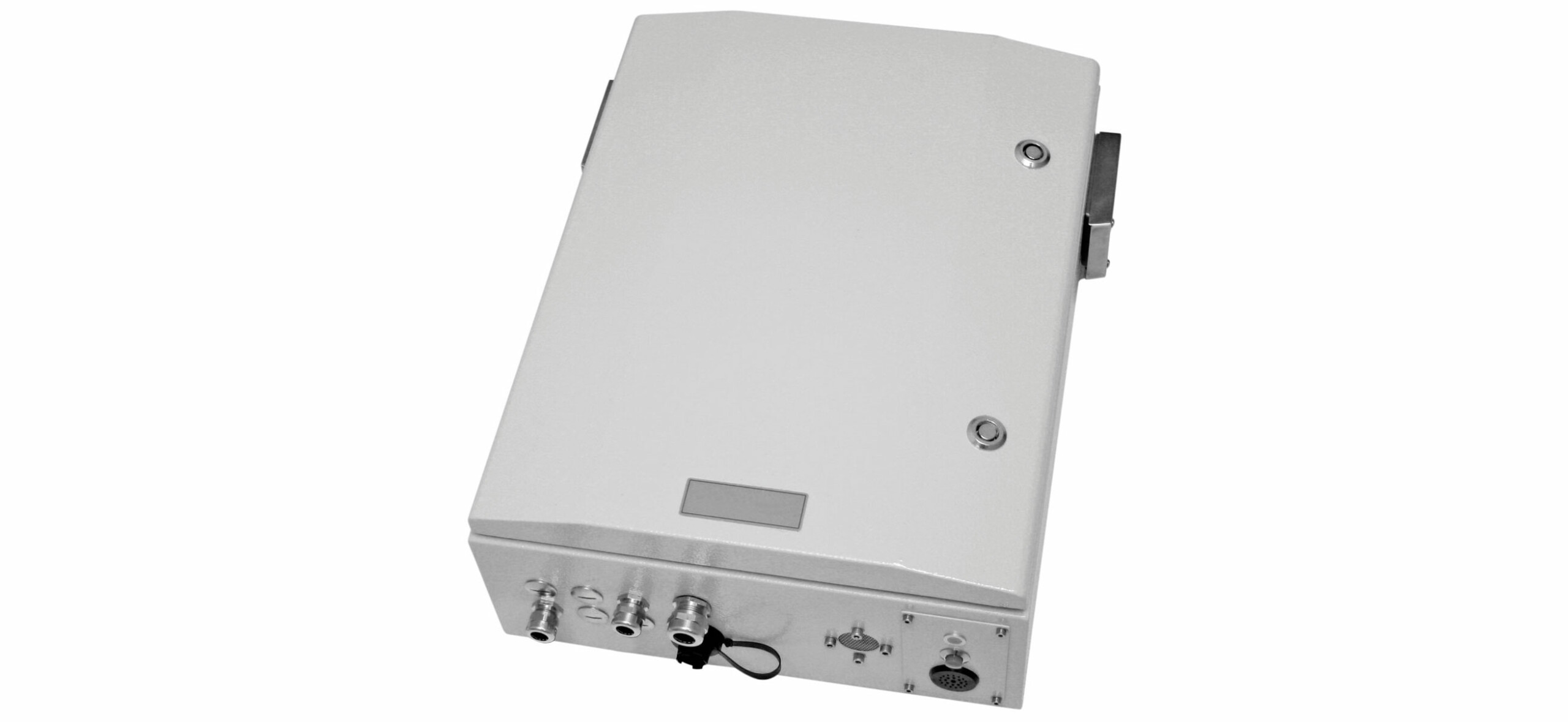
ENVI BioScout is a continuously operating bioaerosol detector, which warns the ship’s crew of the potential biological threat.
Radiation Detectors
The radiation detector continuously measures the background radiation of the ship’s surrounding environment, interior spaces and, if necessary, also the radioactivity of seawater. If there are changes in radiation levels, the crew will be informed of a possible threat increase. The ship’s crew cannot completely protect itself from radiation in the same way as against gas and biological threats, i.e. by filtering the intake air with CBRN filters and pressurizing the interior of the ship. The steel structures of the ship slightly reduce the radiation dose received by the crew and the filters remove the radioactive particles from the air. The prewetting system can also be used to prevent contamination from radioactive fallout and to remove radioactive material from surfaces.
Radiation detectors must monitor both outdoor and indoor radioactivity, and it is also recommended to measure the radiation concentration of seawater. Seawater monitoring reveals if there is radioactive material mixed in the water. The measurement can be performed with sufficient accuracy, for example, through the wall of a seawater pipe pumped into the ship.
Bertin Environics has introduced the RanidX radiation detector, for mobile and stationary platforms. The detector meets all the requirements set by the ship’s system and has been tested against all relevant requirements and standards, like all other components of the CBRN system. The detector is based on proven technology that has previously been used in Bertin Environics’ portable and mobile products from Ranid family.
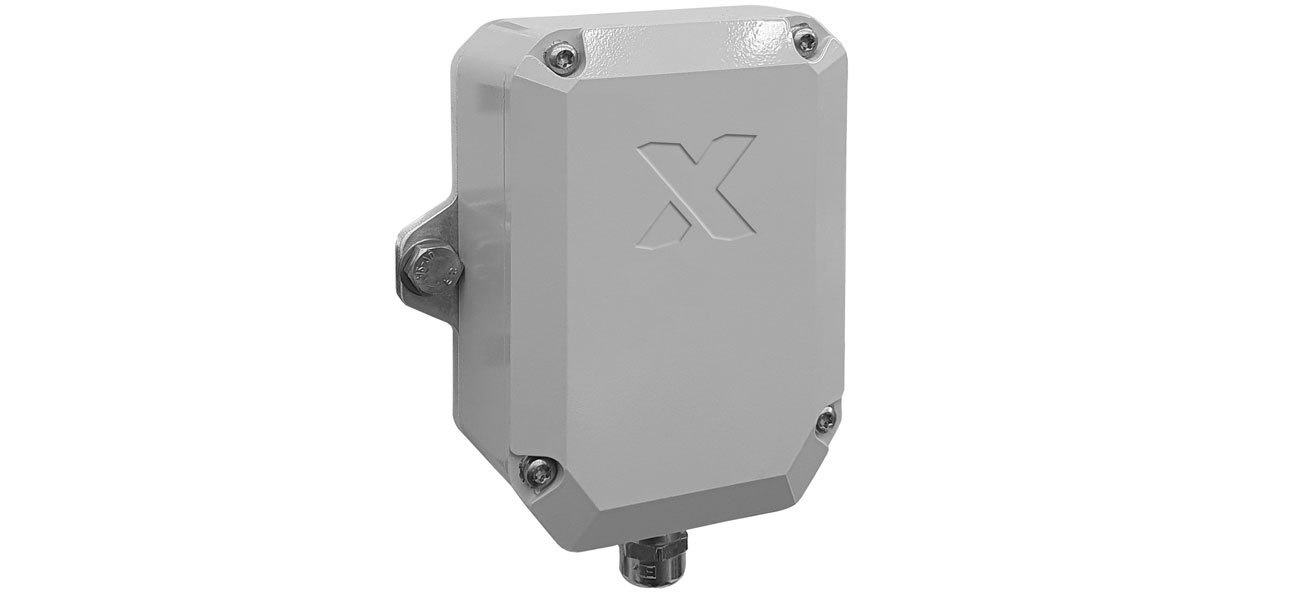
RanidX is Bertin Environics’ new radiation detector designed for mobile and stationary platforms. The detector is specially designed for ship and vehicle use.
The addition of a radiation detector to Bertin Environics’ naval system product line completes the CBRN monitoring system. From now on, we will be able to build complete systems entirely from our own COTS sensors and data management solutions. The only product required from a third party is the computer needed to present the situational awareness, for which we have selected a type-approved solution that meets the requirements of the classification society and other relevant entities.
Summary
Ships don’t face CBRN threats and incidents very frequently, as these are not the most commonly encountered challenges in sea and coastal environments. However, when they do, the effects of a CBRN release are physically and psychologically devastating. Due to the possible consequences, a CBRN monitoring system is a relatively small investment to increase onboard safety. This type of system can be installed during the construction phase of the ship or during mid-life upgrades. The X-System is a complete CBRN Monitoring Solution provided by one single supplier, specially designed for naval environments and seafaring requirements. Each of its COTS components meets the UR E10 requirements set by the IACS (International Association of Classification Societies).
Would you like to know more?
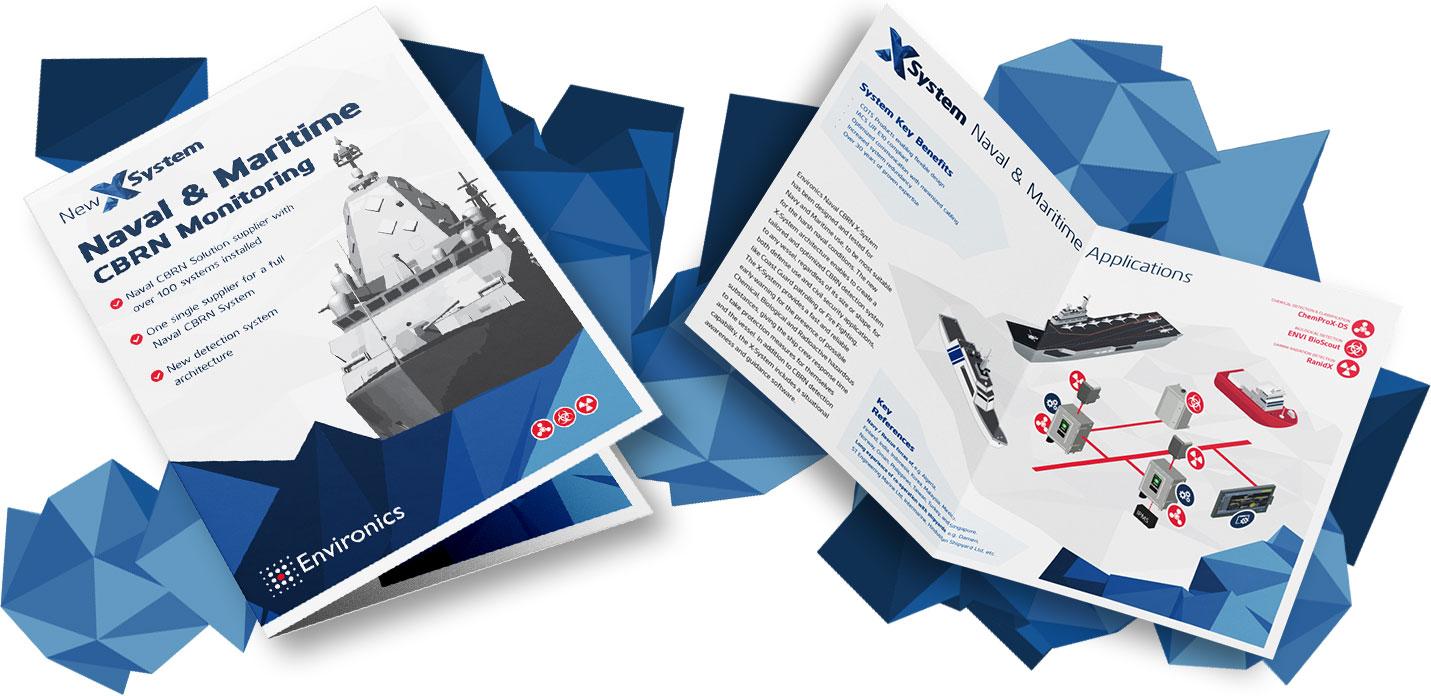
Download the Naval & Maritime CBRN Monitoring Application Note and gain access to exclusive content on X-System when used in vessels.

Leave a Reply